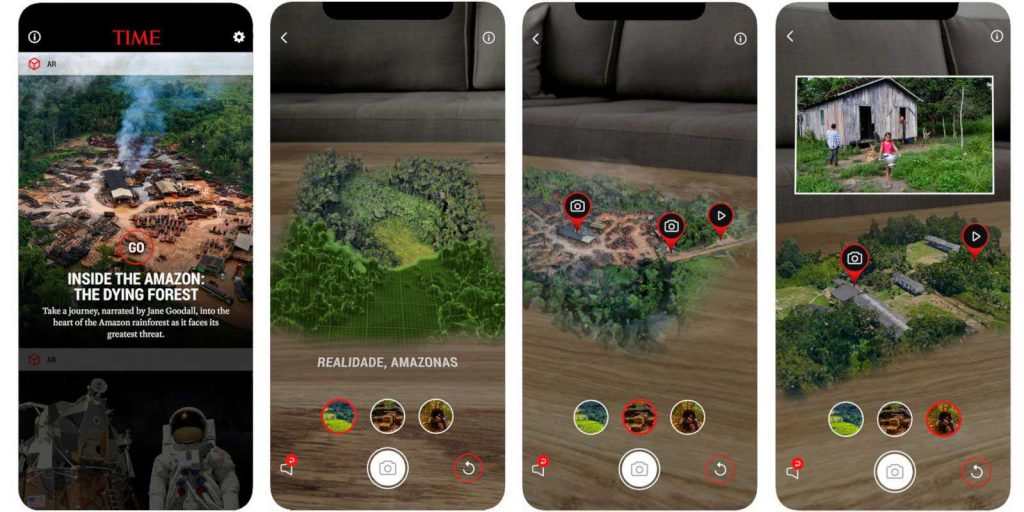What is Spatial Journalism?
What is Spatial Journalism?
Spatial Journalism is defined as “an emerging form of journalism that incorporates space, place, and/or location (physical, augmented, and virtual) into the process and practice of journalism.” This innovative approach brings viewers directly to the heart of the news, allowing them to experience the scene of the report as if they were physically present. Spatial Journalism offers an immersive encounter characterized by user-directed spatial dynamics, granting viewers control over the camera’s perspective to focus on what interests them, rather than relying solely on the reporter’s viewpoint.

Here is a AR version of Spatial Journalism via mobile device. This is interactive on journalism where the user decides what they want to see.
What are the benefits of Spatial Journalism?
Spatial Journalism’s primary advantage is its ability to transport viewers to the scene of the report. It provides them with a unique perspective on the events and an immersive spatial experience. Unlike traditional reporting, which often reflects the reporter’s limited viewpoint, Spatial Journalism empowers viewers with a comprehensive understanding of the entire scene. This eradicates biases and fake news, enabling viewers to form their own conclusions based on a firsthand experience. Consider a scenario involving videos and descriptions of a wildfire. Presenting the entire fire offers a spatial experience that surpasses the limitations of mere videos or textual descriptions.
What are the challenges of Spatial Journalism?
Presently, the major challenge for Spatial Journalism lies in the availability of virtual or mixed reality devices. Augmented, Virtual, and Mixed Reality devices are not as ubiquitous as smartphones. Until such devices become widely accessible, Spatial Journalism may struggle to gain traction and wield the significant impact it has the potential for. In the interim, the solution involves using smartphones and 2D augmented reality. Although not as potent as 3D models, viewers can still navigate through a scene and focus on their areas of interest.

As MR headset become readily available users will be able to view the scene as if they are there in person.
What is the future of Spatial Journalism?
The future of Spatial Journalism is as expansive as the human imagination, albeit sounding a bit clichéd. The presence of fake news will diminish as viewers gain access to firsthand accounts of events. As Augmented, Virtual, and Mixed Reality devices become as prevalent as smartphones, live Spatial Journalism will revolutionize reporting.
Imagine the profound impact of witnessing events like the George Floyd protests firsthand. Through Spatial Journalism, viewers could experience the intricacies that a camera often obscures. They could feel the tension between protesters and law enforcement, comprehend the fervor of numerous frustrated demonstrators. This is the transformative power of Spatial Journalism compared to conventional reporting.
The way history is reported and taught will undergo a profound transformation. Presently, history is conveyed through videos, images, and textual accounts. However, history evolves over time, just as people do. As time progresses, history undergoes changes much like human evolution. In the future, research won’t entail reading articles or watching news reports. Research will involve reliving events as if one were there. With Spatial Journalism, individuals will have the ability to transport themselves back in time, re-experiencing historical events as if they were present on that very day.


